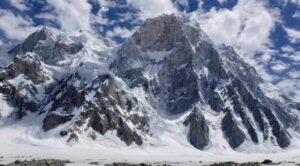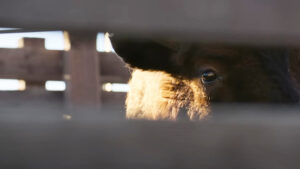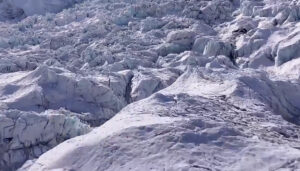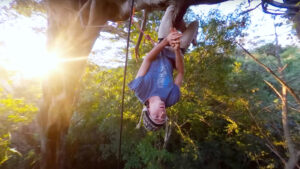It’s been 41 years since an American climbing team attempted Mount Everest’s North Face in 1982.
As I watched the documentary of this failed expedition to reach the summit from China, I realized that it doesn’t feel like a climbing film anymore.
It’s now a ghost story.
And that’s not just because the documentary’s audio has decayed into a warped, de-tuned mess reminiscent of vintage horror films. The already-creepy strings now sound like squealing train wheels, and the horns clash like an unused Ligeti track from The Shining.
It’s fitting music for the tragedy at the heart of this initially hopeful documentary.
Everest North Wall ends as a literal eulogy to the life of Marty Hoey, the expedition’s only woman. An experienced and respected mountain guide, Hoey died on a May 15 summit attempt during filming.
As the documentary foreshadows, high altitude can lead even the best mountaineers to make “mental errors.” When Hoey joined the summit push that would kill her, she forgot to double back the strap through the buckle of her harness — a mistake that proved fatal.
Four decades later, her spirit endures through the camera lens. Her body still buried somewhere on Everest, Hoey lives on as a dream unfulfilled.

Hoey’s ice axe, embedded in the snow where she fell to her death. Photo: Screenshot
As her climbing partner Jim Wickwire wrote in the 1998 memoir Addicted to Danger:
“I heard a sudden pinging sound and turned my head to see Marty pitching backward, head-down the icy slope,” and then falling over a precipice into a misty abyss, Wickwire wrote. “Not once did she cry out.”
Had Hoey and team succeeded in their quest, she would have become the first American woman to summit the world’s highest mountain. Instead, she became another of mountaineering’s cautionary tales and a tragic example of the price too often paid by alpinists.
Hoey’s interviews bring some much-needed charm to the male-dominated film. But in the context of her death, her words also sound like a voice cut short. It’s haunting, perhaps exactly as the filmmakers intended.
“I hope to be the first American female to climb Everest,” Hoey says in the film, early on. “I hope that I’m strong enough to even have the chance, and when it presents itself, I will hopefully be ready…I think the mountain will determine who will be ready to climb.”
When Hoey slides off Everest, never to be seen again, it shatters the rest of the team.
“After the rage came the disappointment and the sadness,” expedition leader Lou Whittaker recalls in the film. “It was pretty lonely. We sat there and questioned whether mountaineering was something we would follow in the future.”

Hoey’s body was never recovered, and the documentary concludes with the team offering her a eulogy around an improvised grave. Photo: Screenshot
Though the team made another summit attempt, they ultimately turned back. Technically, a sudden snowfall made further progress impossible.
But when Whittaker spoke to The Associated Press for a story published later that year, he made it clear that they just couldn’t recover from Hoey’s death.
The loss of Hoey “dealt a mortal blow to our motivation,” Whittaker said. “Our spirit was gone.”






